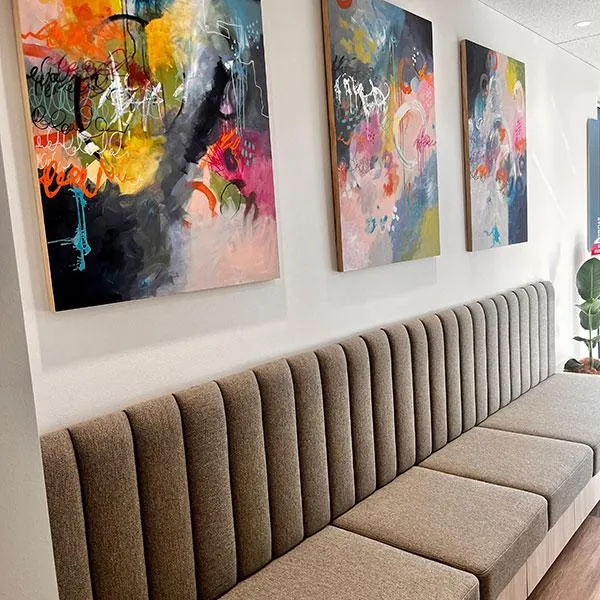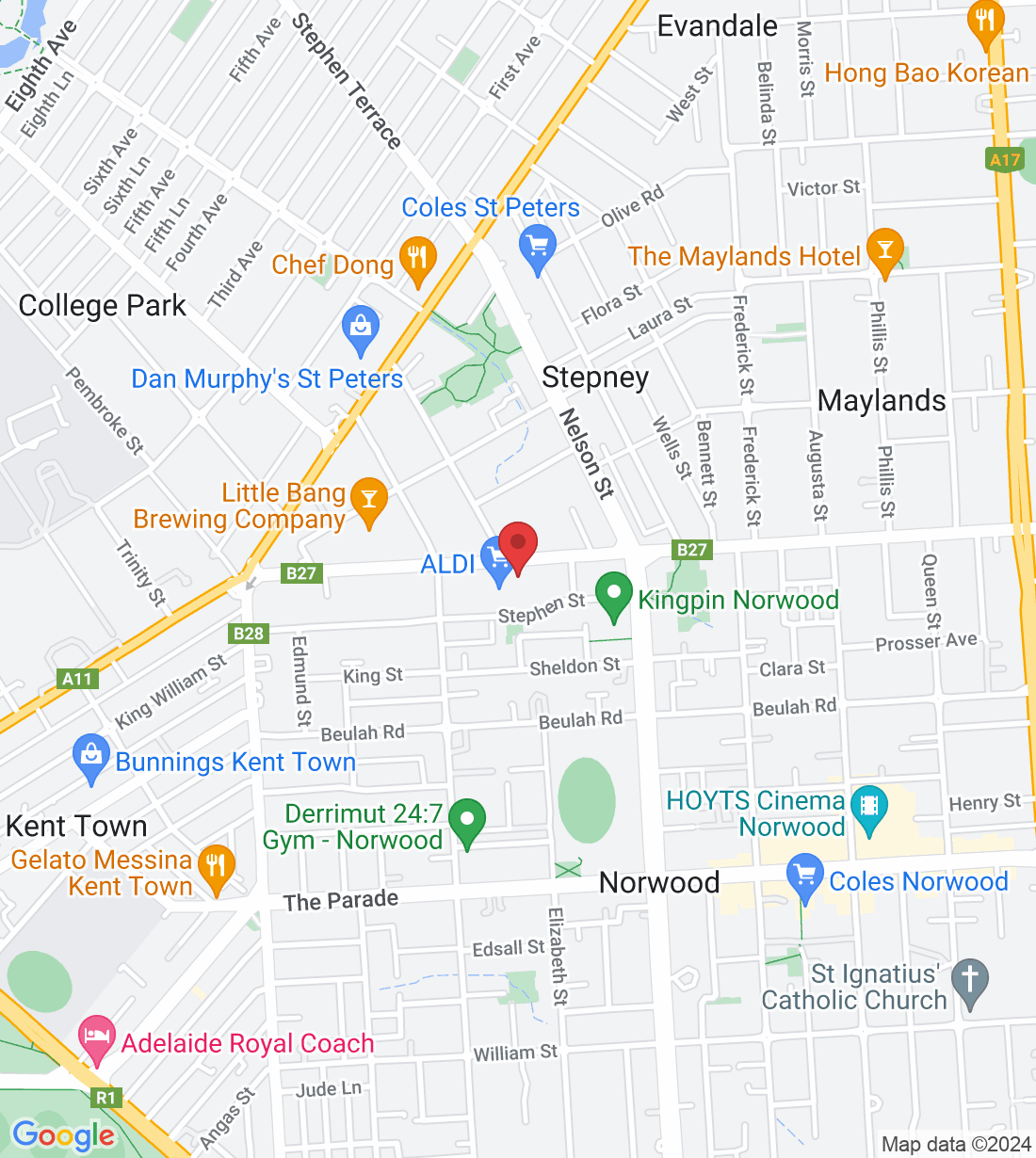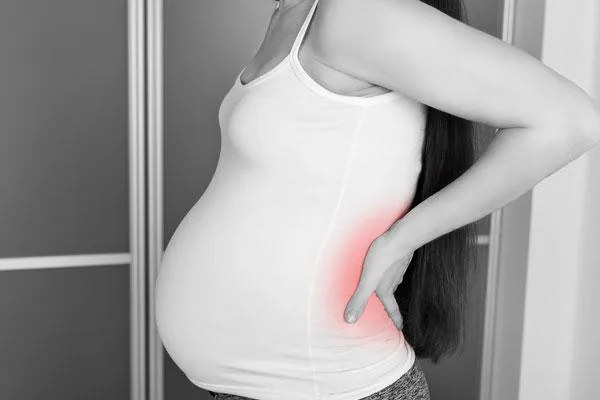
Pregnancy Pelvic Girdle Pain
At Vital Core Physiotherapy we are passionate about looking after mums during and after their pregnancies. Therefore it’s no surprise that one of the most common conditions we treat is Pregnancy related pelvic girdle pain (PPGP). Please watch this video of Physio Olivia as she discusses the very common condition
What is Pregnancy pelvic girdle pain?
As the name suggests, PPGP is pain that is experienced in the pelvis during pregnancy. To help understand the condition better, here is a little anatomy lesson. The pelvis is a “ring” which comprises of the 2 pelvis bones, the Sacrum, Coccyx (tail bone), two Sacro Iliac joints (SIJ’s), the Pubic Symphysis and the Sacro-coccygeal (tail bone joint).
PPGP is described as any pain in this pelvic ring, most commonly in the back in the pelvis (SIJ’s) or buttocks, or in the front at the Pubic Symphysis joint and groin. The pain may also radiate down the back of the legs and you can have pain in both the SIJ’s and pubic symphysis at the same time. Pregnancy lower back pain (LBP) is a separate condition, but it is not uncommon to experience both PPGP and LBP.
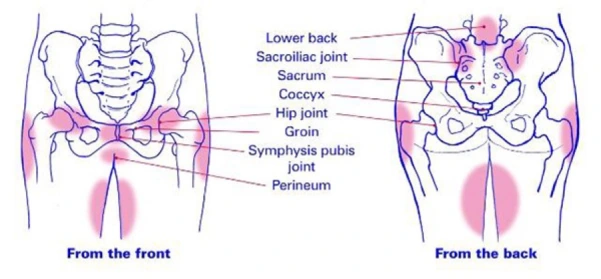
If you are currently pregnant or have been pregnant, there is a good chance that you have experienced some of these symptoms as it is fairly common during pregnancy with about 1in 5 pregnant women experiencing significant PPGP. It can occur at any time during the pregnancy and can start as early as the 1st trimester, but often peaks in the 3rd trimester. For most mums PPGP goes away after having their babies, but for 7% the pain can remain.
Symptoms of Pregnancy Pelvic Girdle Pain
PPGP is not just a “normal pregnancy niggle” and mums are likely to seek help as it can significantly impact on activity. The nature of the pain can range from a constant dull ache to a sudden sharp pain and the sense of the pelvis “giving way” that stops all activity.
The most common symptom is pain when moving from sit to stand and the first few steps. Pain is often worse after sitting for prolonged periods or during and after big walks. Most mums with PPGP find it hard to turn in bed and to get comfortable in bed, impacting on much needed sleep. Getting in and out of the car and going up and down stairs can be really difficult.
The nature of the pain can range from a constant dull ache to a sudden sharp pain and the sense of the pelvis “giving way” that stops all activity.
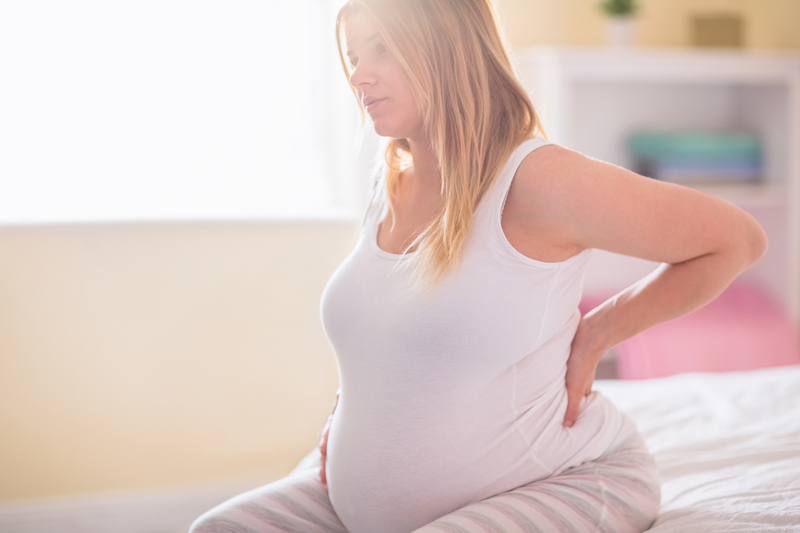
PGPP can make sleeping difficult
The nature of the pain can range from a constant dull ache to a sudden sharp pain and the sense of the pelvis “giving way” that stops all activity.
Causes of Pregnancy Pelvic Girdle Pain
Research into the exact causes of PPGP is constantly developing and as with most conditions, it’s multifactorial. The pregnant body is amazing, but goes through many weird and wonderful changes to grow a baby. Think changes in posture, weight gain and hormonal changes to name a few. One of the hormones progesterone, increases joint sensitivity and pain.
Another hormone relaxin, which surges at 9-12 weeks and again at 36 weeks of pregnancy, helps to soften the ligaments around the pelvis, and the rest of our bodies. It allow the pelvis to accommodate a growing baby and to prepare for labour. You may have heard or read somewhere that the pelvis becomes “unstable” or “goes out of joint”. In the past the hormone relaxin was incorrectly to blame for all our pregnancy related aches and pains. However, Relaxin is now thought to cause just a slight increase in movement in the pelvic joints which affects how the joints tolerate load, making them even more sensitive. There there is very little evidence that relaxin actually causes pelvic instability, so rest assured the pelvis cannot “go out of joint” even though it may feel like it.
Factors which may increase a mum’s risk of developing PPGP include:
Previous PPGP/ LBP
High BMI
Previous pregnancies
Orthopaedic problems such as fractures (leg, hip or back) and
High levels of stress and worry.
Additionally, strenuous work, inappropriate exercise or not enough exercise, weak or stiff muscles, hypermobility, pelvic floor muscle dysfunction, abdominal muscle diastasis and a poor pregnancy posture may all play a role in the development of PPGP.
With all this in mind it is understandable why we don’t have a “recipe” to manage PPGP and that an individualised treatment plan is paramount.
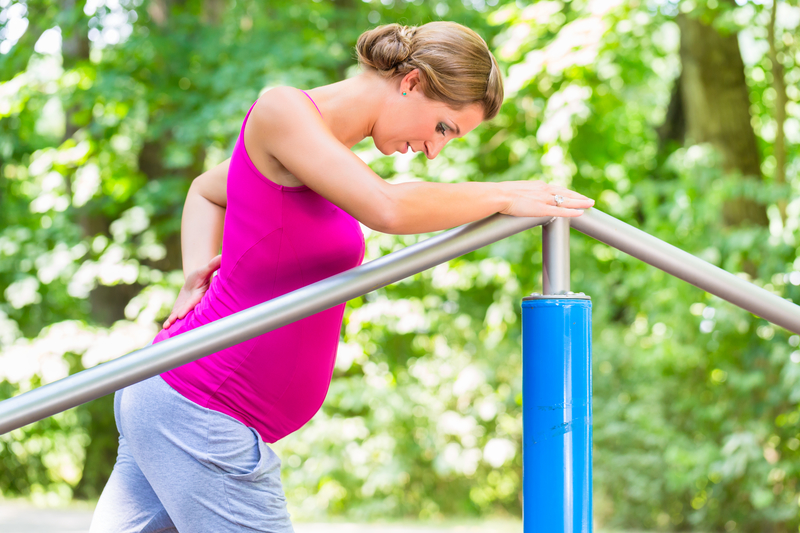
It is common in severe PGPP for the pelvis feel ‘unstable’ but rest assured it is not.
How can Vital Core physio help?
The good news is that we have strong evidence that Physiotherapy can help with your PPGP and prevent persistent pain.
At Vital Core Physiotherapy your posture, joint range of movement and what your pelvis is doing during movement and weight-bearing will be assessed. It is also important to assess the muscle groups around the pelvis for weakness or excessive stiffness including the pelvic floor. Based on this we can develop a treatment plan.
Most mums will benefit from pelvic support in the form of a brace, tubigrip, or support shorts (e.g SRC shorts) to take the load off the sensitised structures. Unfortunately, this is not a quick fix and is only an adjunct to hands on treatment, an exercise programme, education, and advice unique to your PPGP. There are also many different types of pelvis support braces available for purchase, but not all are equal and needs to be fitted correctly to provide relief of symptoms.
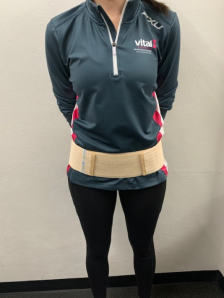
Pelvic support belt or brace
We also know from evidence that an individualised exercise programme works best and it is better if it is done supervised, that is why we always encourage mums to attend a weekly supervised exercise class as part of their treatment plan.
Pregnancy exercise guidelines highlight the many benefits of staying physically active. You can read more about exercise in pregnancy here. So to help keep you moving and feeling great through pregnancy we advise that you seek advice from one of our experienced physiotherapists as soon as you notice symptoms.
Give us a call, we are here to help!
References:
Vleeming A, Albert HB, Ostgaard HC, Sturesson B, Stuge B. European guidelines for the diagnosis and treatment of pelvic girdle pain. Eur Spine J. 2008; 17(6):794–819. Doi: 10.1007/s00586-008-0602-4
Clinton SC, Newell A, Downey PA, Ferreira K. Pelvic Girdle Pain in the Antepartum Population: Physical Therapy Clinical Practice Guidelines Linked to the International Classification of Functioning, Disability. Journal of Women’s Health Physical Therapy: May 2017 – Volume 41 – Issue 2 – p 102-125doi: 10.1097/JWH.0000000000000081
Ask a question of Vital Core Physiotherapy
Fill in the form to request a Call From Our Team
One of our team will call you for FREE and answer any questions or concerns you may have about your condition
© 2023 Vital Core Physiotherapy



